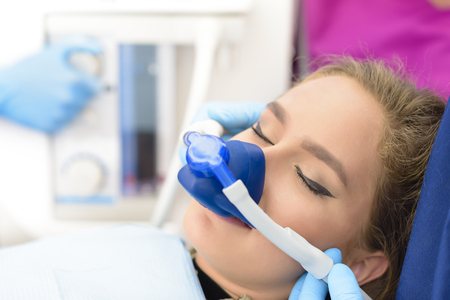Many Hendricks County residents avoid going to the dentist because they’re afraid it will hurt. The good news is dentists use dental anesthesia to treat millions of people safety every year. Dentists can use a variety of medications and techniques to provide pain relief, relaxation, anxiety reduction, memory loss, and sometimes complete unconsciousness during most dental procedures.
Types of Dental Anesthesia
Most people don’t realize there are actually several types of dental anesthesia.
- Topical anesthesia. Medication is applied with a cotton swab to numb the area in the mouth or gums where dental work will be done. Topical anesthesia also may be given prior to a shot of a local anesthetic.
- Local anesthesia. If you need to have a cavity filled, a tooth pulled or a tooth prepped for a crown, Jon Erickson at Danville Family Dentistry, located in Hendricks County, may use a local anesthesia to prevent pain by numbing the tissues in a specific area of your mouth. Local anesthesia is usually given as an injection in the specific area. With local anesthesia, you’ll stay awake and remember everything during your dental procedure.
- Nitrous oxide (or laughing gas). Nitrous oxide is a gas that’s combined with oxygen. You breathe nitrous oxide through a rubber mask that’s placed over your nose. A common form of sedation, it helps you to relax. However, the effects wear off quickly. It’s the only form of sedation in which you can drive yourself home after the procedure. Danville Family Dentistry offers nitrous oxide to help ease your dental anxiety.
- General anesthesia. With general anesthesia, you’ll be unconscious during your dental procedure. It is given as liquid medication intravenously through an IV or breathed as a gas through a face mask. Typically, general anesthesia is only used for extensive dental procedures since this anesthesia requires the dental staff to closely monitor you for sudden drops in blood pressure and irregular heartbeats. You cannot drive after you’ve had general anesthesia or eat after midnight the night before your procedure.
- Intravenous sedation. During this sedation method, a sedative will be injected into a vein in your arm or hand. Typically, IV sedation is only given to patients undergoing extensive dental procedures or for patients with extreme anxiety. IV sedation requires the dental staff to monitor your oxygen levels and give you additional oxygen, if needed. During the procedure, you’ll be awake, but very sleepy. However, you won’t feel pain. Afterwards, you may not remember much or anything about the procedure. Again, you won’t be able to drive after the procedure, and you can’t eat after midnight the night before your procedure.
While anesthesia may sound a little scary, your dental team will make it as safe as possible. Talk to Dr. Erickson about which anesthesia option is best for your dental procedure. At Danville Family Dentistry, we want your dental care to be worry free, so talk to us about any concerns you may have. Call our Hendricks County office at 317-745-4400 to schedule an appointment.


 (317) 745-4400
(317) 745-4400
